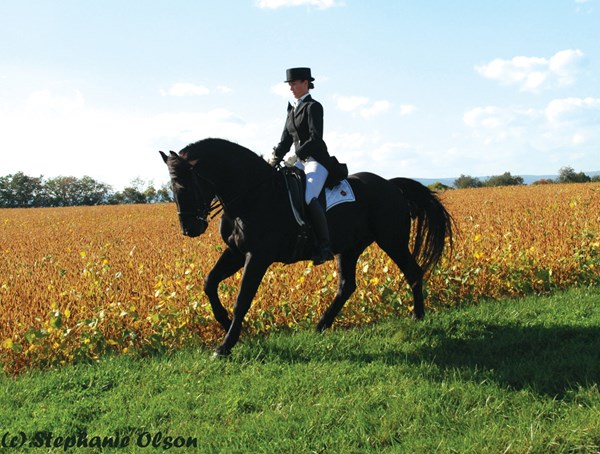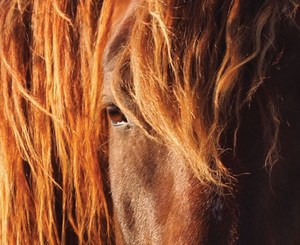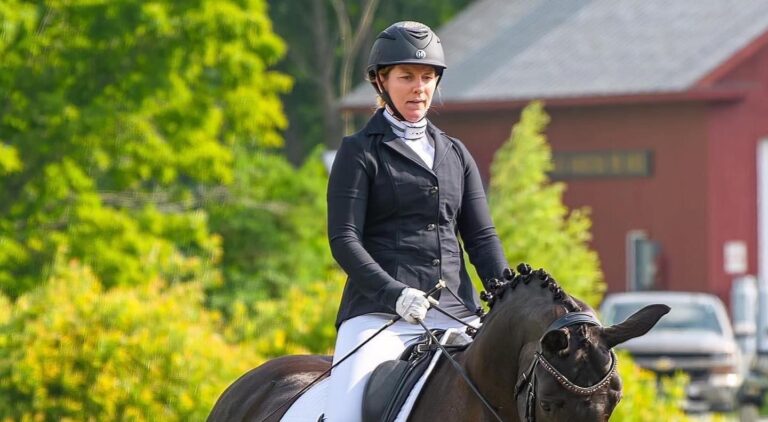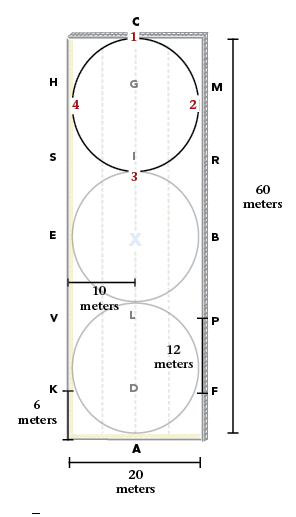“Why can’t my horse be more like that?” Kimberley Beldam often hears in reference to her easygoing 1999 Canadian Horse, Saguenay EveYukon Jospatriote (Patriote). His laid-back attitude is typical of the Canadian Horse breed (not to be confused with the Canadian Warmblood) and is one of its most celebrated qualities. Beldam specializes in Canadian Horses for dressage and eventing and notes that she “can take the Canadians to a show single-handed, and know they’ll handle everything in stride.”

Canadian Horses like Patriote possess characteristics that reflect their Andalusian ancestors, such as a finely chiseled head, arched neck and thick, long, wavy mane. Typically, they have short, wide cannon bones that are often greater than 9 inches in circumference, making their legs particularly strong and sturdy.
The Canadian Horse was named the National Horse of Canada in 2002, but the breed first emerged during the 17th century when Louis XIV, king of France, began to send breeding stock to Canada on a regular basis. Ken Morris, chair person of the Canadian Horse Heritage and Preservation Society (CHHAPS) and author of Historical Descriptions of the Canadian Horse, explains that Sieur de Solleysel, a horseman during the time of Louis XIV, wrote a book called Le Parfait Marechal, in which he outlined the ideal horse of the French nobility.
The ideal baroque-type horse (the foundation of the Canadian Horse) was strong and muscular but not too tall or heavy, said Solleysel. The forehand could be somewhat heavy, but above all, the loins were strong. He also said that the pasterns were short and flexible and the feet sturdy. In temperament, the horses were calm and cool. These qualities made them suitable for riding as well as fit for combat.
The early French horses were given to religious orders and to those who worked in agriculture. These owners were required by contract to breed the horses and return a foal to the government after three years. This foal was then given to someone else who continued the cycle. This system perpetuated the reproduction of the breed and ensured its rapid growth.

The breed’s heyday ended with the mechanization of the mid-1900s. By the 1970s, there were only 400 in existence and fewer than five registrations were recorded per year. Breeders acted in response to the sharp decline and, by the mid-1990s, there were approximately 3,000 Canadian Horses worldwide. Today, there are about 6,000.
There have been some attempts to make the breed taller and more refined. However, there are several organizations, such as CHHAPS, that seek to maintain the traditional characteristics. Because of its history, the breed is known for its hardiness and earned the nickname “The Little Iron Horse.” According to Morris, the breed’s sturdiness can also be attributed to the fact that early Canadian Horses had to survive a series of difficult sea voyages and a harsh northern climate, where forage was not yet grown.
Beldam credits part of Patriote’s success to his no-fuss lifestyle. “Patriote doesn’t live the typical upper-level horse lifestyle,” she said. “He lives outside with one of his sons and a mini horse. These horses are so hardy that they don’t need pampering. He didn’t wear shoes until he was at Third Level.” Beldam plans to debut him at Prix St. Georges this year.
Although a rarity, Canadian Horses are available in the United States. “There are some great U.S. breeders,” Beldam explains. “Importing a horse to the United States is easy and most breeders are more than willing to help out in that area. But you’ll find a broader selection of horses in Canada,” she said.
Beldam found Patriote during her search for a stallion prospect across Ontario and Quebec. She eventually found Canadream Farm and owner Marie-Josée Proulx, from whom she purchased a weanling. The weanling’s sire happened to be Patriote, who was a breeding stallion until age 8, when he was gelded and started under saddle. Beldam had the chance to ride Patriote and she “fell in love.” Proulx asked if Beldam would be interested in bringing him to the United States to offer him for sale. She agreed, but decided that he was too special to sell, and she continued to campaign him. She now has two of his babies and is his co-owner.
To get involved with the breed, Beldam also recommends joining the Canadian Horse Breeders Association (CHBA). It has a Facebook page that will help you connect with some U.S. breeders and owners. “I’d encourage anyone who’s interested to make contact with a breeder or owner. You’ll need to meet only one [Canadian Horse] to fall in love.”











